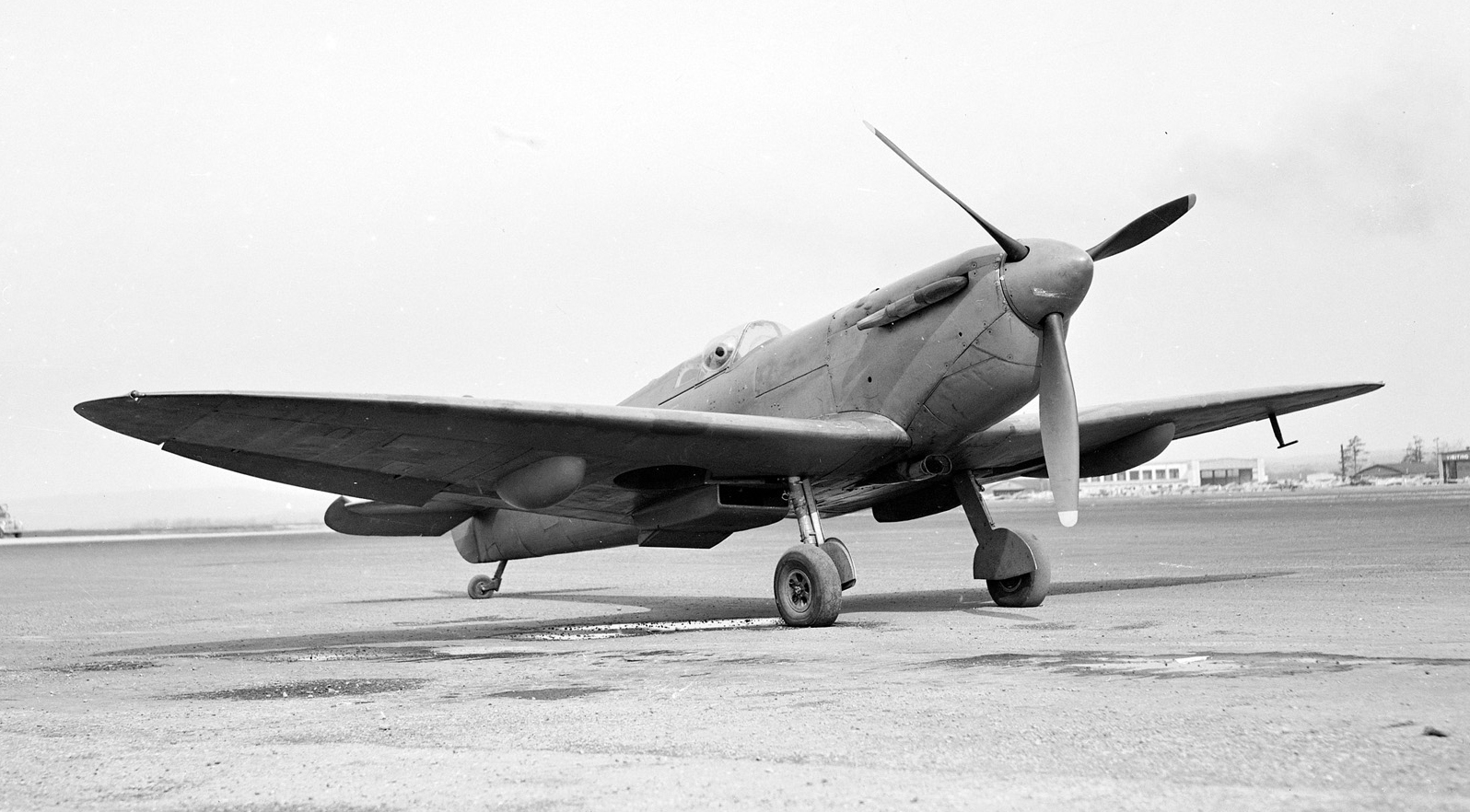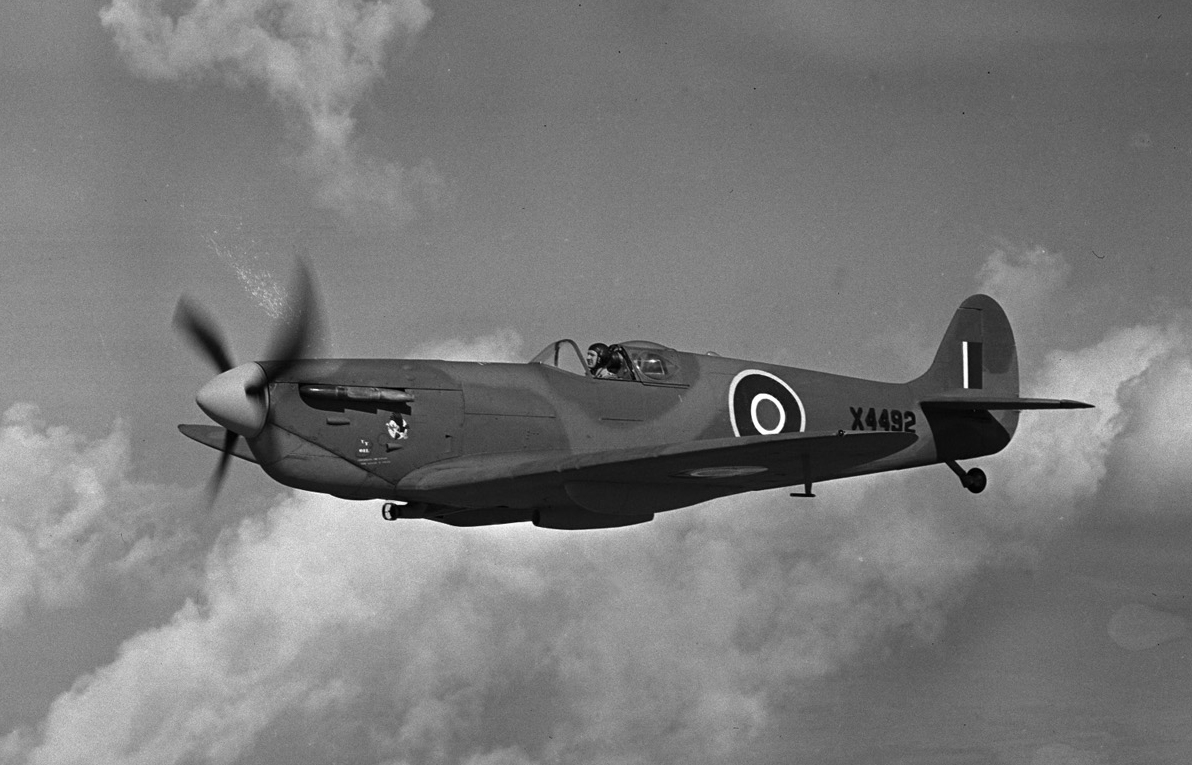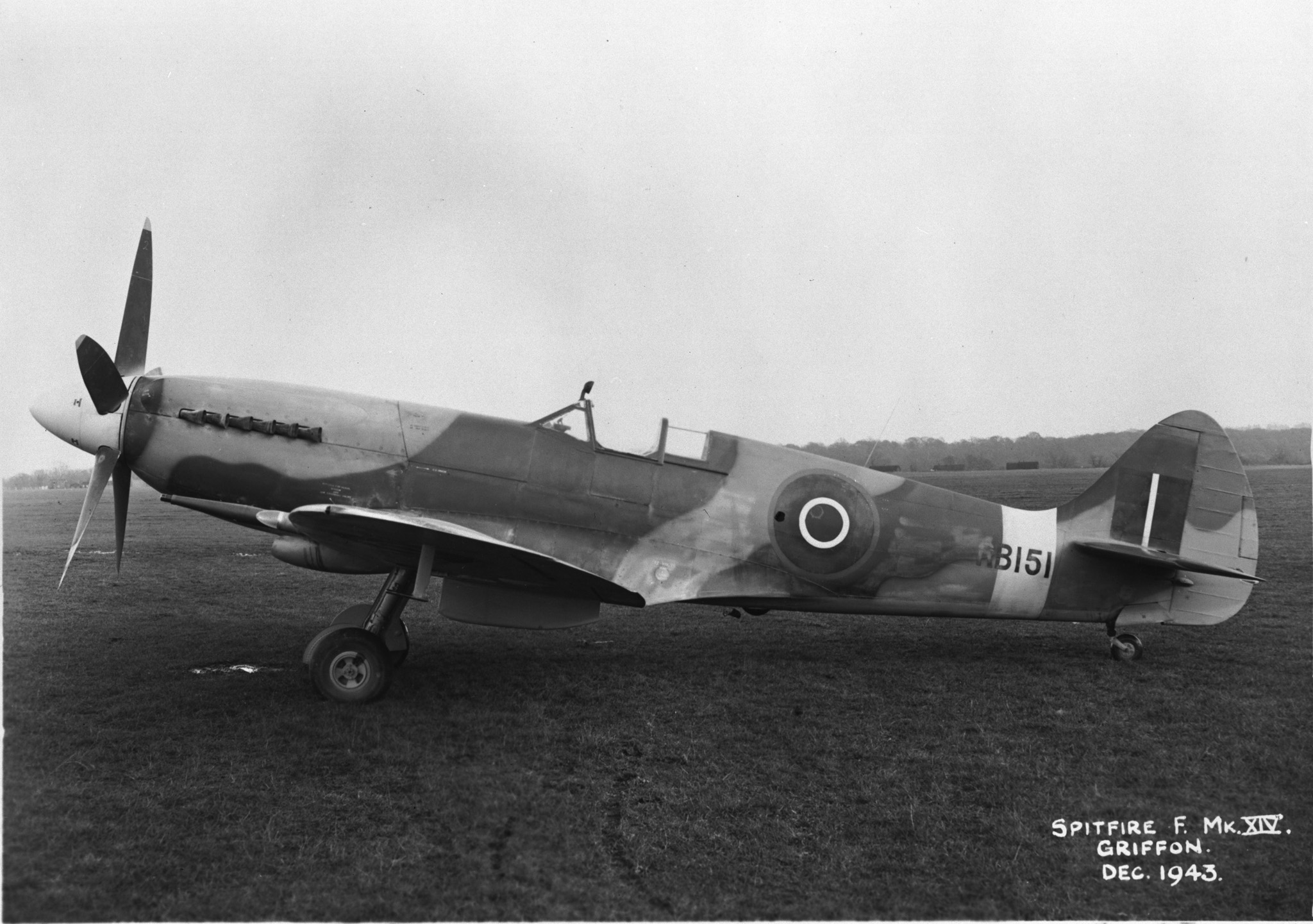Supermarine Spitfire

Overview
Overview
First flown in 1936, the Spitfire would become famous as the leading British fighter of the Second World War. A total of 20,351 (excluding naval variants) were built which was more than any other British warplane. No. 403 Squadron first flew the Spitfire on Canadian operations in March 1941 and a total of 14 RCAF squadrons would eventually fly this type of aircraft. Of these squadrons, ten were fighter or fighter-bomber squadrons in Europe, three formed a RCAF fighter-reconnaissance wing, and one squadron, No. 417 Squadron, flew fighter-bombers in North Africa, Sicily, and Italy. The first enemy jet fighter, a German Me 262, to be shot down fell to a Spitfire from No. 401 Squadron. Interestingly, despite the large number of Spitfires flown operationally by Canadians, the RCAF only had a handful of Spitfires on official establishment strength throughout the war. These aircraft were primarily unarmed reconnaissance variants used for various test and photographic missions. The first Spitfire in Canada, on loan from the RAF, was used in 1940 to test the first “G” suit, which also was invented in Canada.
| Model Number | 300, 329, 331, 359, 360, 361, 365, 379, 380 |
| Marks | Mk IA, II, IIA, IIB, VA, VB, VC, VIII, IXB, IXC, IXE, XI, XV, XIV, XIVE, XVIE |
| Role | Fighter |
| Taken on strength | 1940 |
| Struck off strength | 1950 |
| Number | 8 |
| Service | RCAF |
|---|
Source: Canadian Combat and Support Aircraft: A Military Compendium by T.F.J. Leversedge © 2007. Translated and reproduced with permission of the author.
Technical Specifications
Technical Specifications (Mk IV)
| Manufacturer | Supermarine Aircraft |
| Crew / passengers | One pilot |
|---|---|
| Powerplant | One 1,030 horsepower (768 kilowatt) Rolls Royce Merlin II |
| Maximum speed | 364 miles per hour (586 kilometres per hour) |
| Cruising speed | |
| Service ceiling | 31,500 feet (9,601 metres) |
| Range | 395 miles (636 kilometres) |
| Empty weight | 4,341 pounds (1,969 kilograms) |
| Gross weight | 5,800 pounds (2,631 kilograms) |
| Span | 36 feet 10 inches (11.23 metres) |
| Length | 29 feet 11 inches (9.10 metres) |
| Height | 11 feet 5 inches (3.48 metres) |
| Wing area | 242 square feet (22.48 square metres) |
| Armament | Eight .303 inch (7.7 millimetre) machine guns in the wings |
| Cost | Unknown |
Source: Canadian Combat and Support Aircraft: A Military Compendium by T.F.J. Leversedge © 2007. Translated and reproduced with permission of the author.


